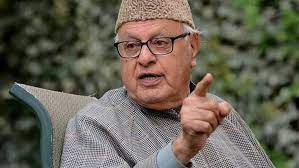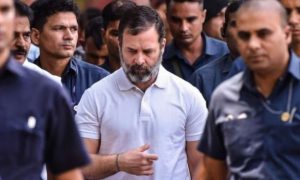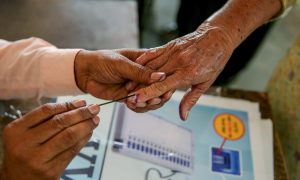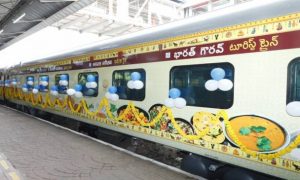The BJP’s dilemma on the matter can be easily understood. Any wrong move on such controversies can likely put a strain on the larger caste solidarity it has so painstakingly forged under the umbrella of Hindutva ideology
With almost a year left until the 2024 general elections, the Hindi heartland region of Uttar Pradesh and Bihar have been hit by a controversy over the Ramcharitmanas. One of the most revered religious texts, written by Goswami Tulsidas, a devout Rambhakt in the 16th century, is increasingly under attack from a section of backward caste leaders belonging to the Samajwadi Party in Uttar Pradesh and to RJD and JD(U) in Bihar, for allegedly being anti-backward, anti-Dalit, and anti-women.
And as the BJP is cautiously subdued in its counterattack on the matter, the issue is being kept alive with criticism coming in from a section of upper caste leaders from those opposition parties that have traditionally thrived on the backward class identity politics, or the Mandal phenomenon. The latest to join this debate is SP MLA Rakesh Singh. A kshatriya upper caste leader, Rakesh has now come forward to take on his fellow leader Swami Prasad Maurya for his comments against the “Manas”.
Read More: CM Vijayan Challenges Amit Shah to Disclose All That is Wrong with Kerala
Addressing a public event in his constituency, Gauriganj, Rakesh said, “Swami Prasad Maurya has lost his mind. As a fellow leader, I appeal to him to take his comment back.” Singh added that he will take up the matter with the party’s top leadership.
The first impression of Rakesh Singh’s counterattack may be about a possible division within the Samajwadi party. A deeper analysis suggests that actually might not be the case.
The party possibly tends to gain if the upper castes versus backward caste debate continues to prevail. Hence, even if a section of upper caste leadership from within the ranks is uncomfortable with what the likes of Swami Prasad Maurya in UP or Bihar education minister Chandrasekhar say against the Ramcharitmanas, parties like SP, RJD, and JD(U) are better placed to gain politically if this debate rages on.
It is also interesting to point out that the “Manas debate” has been ignited at a time when the demand for a caste-based census has become a political talking point in both these states, where caste politics has for long been at loggerheads with BJP-RSS’s Hindutva politics.
While in Bihar, the Nitish Kumar-led government in its first major decision after his separation from the BJP and alliance with the RJD, ordered the caste census, in Uttar Pradesh the demand is gaining momentum. The SP has declared that it will launch an agitation in support of the demand, with party chief Akhilesh Yadav accusing the BJP of being anti-poor. He said, “Caste census is the only way for ensuring economic growth for the deprived and my party will start a campaign for it in every district.”
Read More: As CM talk swirls around him, it’s Tripura CPM leader Jitendra Chaudhary’s moment in the sun
AGGRESSIVE OPPOSITION, GUARDED BJP
Contrary to expectations, the BJP’s response to the “Manas controversy” as well as the caste census debate has been a guarded one. Unlike the usual aggression from its rank and file on such issues of religious discourse, the party leaders have mostly been silent on the matter. A senior party leader not willing to be quoted said upper caste leaders of the party have been advised not to react on the subject.
Even UP chief minister Yogi Adityanath has not been very vocal on these issues. Recently, speaking with Network 18 Group Editor-in-Chief Rahul Joshi, the CM, while responding both on the “Manas controversy” and also the caste census demand, refrained from a direct attack against the top backward class face of UP politics Swami Prasad Maurya. Yogi only said that “those who question the Manas are not aware of how revered the text is”.
On the question of demand for the caste census, Yogi said that such decisions are taken by the Centre.
The BJP’s dilemma on the matter can be easily understood. Any wrong move on such controversies can likely put a strain on the larger caste solidarity it has so painstakingly forged under the umbrella of Hindutva ideology.
Dr Prashant Trivedi of the Lucknow-based Giri Institute of Development Studies says, “It has been after long and often a lost battle with the forces of Mandal politics that the BJP and the RSS have been successful in moving beyond from just being the party of the upper castes. A big chunk of backward castes left the Mandal fold and came with the BJP in 2014 and has continued to stand with it through successive years since then. It is this MBC (most backward castes) vote bank and a section of Dalits too which the opposition now wants to reach, right from Uttar Pradesh to Bihar.”
It is estimated that the backward classes are the biggest segment of the state’s population. Estimates are that the figure is somewhere between 45 to 50 per cent of the total population. The Mandal commission report in the late 1980s has for the first time fanned the assertion of the backward caste politics in the states of UP and Bihar. The rise of the likes of Mulayam Singh Yadav in UP and Lalu Prasad Yadav in Bihar was the manifestation of it.
The demand for an OBC caste census has existed since then. Three decades later, as Mandal politics slowly lost momentum, the growing noise around caste census can well be an effort to revive the old politics.
MANDAL POLITICS—OPPOSITION’S ONLY HOPE AGAINST BJP?
In the state of Uttar Pradesh, where the BJP since 2014 has almost wiped out the opposition, the revival of Mandal politics seems to be the only big hope for the likes of the Samajwadi Party. Even the grand alliance of the SP and the Dalit-leaning Bahujan Samaj Party (BSP) failed to dent the BJP’s caste consolidation.
Now in the run-up to the 2024 general elections, the Hindi belt of UP and Bihar is equally vital for both the BJP and its opposition. The BJP needs to have a strong grip on the region if it is to hope for a third consecutive win, and the opposition needs to stop the saffron party’s juggernaut here if it has dreams of ousting the Narendra Modi-led BJP government from power.
The states of UP and Bihar comprising 120 Lok Sabha seats (80 in UP and 40 in Bihar) were swept by the BJP and its allies in 2019. The NDA had won 39 seats in Bihar, which comprised 17 of the BJP and 16 of the JD(U). With the latter now out of the NDA fold, the state of Bihar is already a bigger challenge for the BJP.
In Uttar Pradesh, the BJP and allies won 65 seats, routing the much-hyped alliance of the SP-BSP. The party seems even better placed in the state now, as opposition unity remains in shambles. For a badly battered opposition, it is a do-or-die situation. No surprise that it wishes to revive the old magic of the Mandal formula that was so effective against the BJP all through the 1990s and in the period before 2014.
Therefore, it can be expected that the SP, RJD, and JD(U) will further try to stoke backward-class sentiments. For the moment, it is the Ramcharitmanas controversy and the caste census demand that are being used to ignite the sentiments.
Samajwadi Party spokesperson Ameeq Jamai, however, doesn’t agree. He says, “The Samajwadi Party has been demanding and agitating for the caste census since the time of late Mulayam Singh Yadav and the BJP has always opposed it because it is primarily anti-backward and anti-Dalit.”
For the BJP on the other hand, it is likely to be a continued strategy of being less vocal on such issues along the caste discourse. For it, the “Hindutva master stroke” will be the grand Ramlala temple in Ayodhya, the opening of which is all set to happen in January next year, just months before the electoral battle.



































